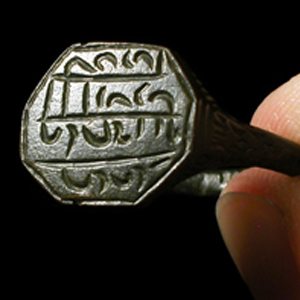A Brief History of Men’s Wedding Rings
As ubiquitous as the custom has become today, it surprises most people to discover that brides did not always place a wedding ring on their beloved’s finger until quite recently.
The practice of placing the ring on the third finger of the left hand originated in ancient Egypt – the Egyptians believed that there was a vein of love’ that ran directly from that finger to the heart. While hieroglyphics on papyrus scrolls show that wedding bands were worn by women in ancient Egypt thousands of years ago, the concept of men’s wedding rings as we know it today only became popular in the middle of the 20th century! Yes, the women had the guys beat by thousands of years.
The closest tradition came to having men wear wedding rings was with the Gimmel’ ring, which was a popular option in the 16th and 17th centuries in Europe. Gimmel rings consisted of two interlocking bands. Both the man and the woman would wear one band each after they were engaged. However, these rings did not remain with the man as a wedding ring; at the wedding ceremony the man would place his ring onto his bride’s finger, reuniting the gimmel as one.
The major push to bring men’s wedding rings into the mainstream was, unsurprisingly, by the jewelry industry. The first efforts in the late 19th and early 20th century failed to have a significant effect on changing the tradition of women-only wedding rings.
One of the main reasons for that lack of success seems to be that the campaign coincided with the Great Depression – there was just not enough money to be spent on two rings for the young couple looking to get married. Another important factor was how masculine’ and feminine’ accessories were strictly defined in that era – changing those concepts, particularly in the minds of men who had seen the First World War was always going to be an uphill task. Double ring ceremonies’ at this time constituted only 15% of all weddings.
The Depression snuffed out these early attempts and after the 1920s, there was no major push towards men’s wedding rings for some time. However, events around the world were conspiring and, strange as it is, Love and War are inextricably linked.
When World War II broke out and young couples were wrenched apart by circumstances beyond their control, the humble male wedding band made its appearance again, but on a scale unseen before. In countless locations and in conditions they had never seen before and had never wanted to, millions of young men, thousands of miles from home dreamed wonderful dreams and shed hidden tears as they stroked the comforting coolness of the halos of metal on their fingers.
That simple band was the only bond to the girl, sometimes newly-wed, whose face many of those young men would never lay their eyes on again.
By the end of the war, double ring ceremonies made up a whopping 80% of all registered weddings. By the time the Korean War followed shortly after, the concept of brides placing a ring on their groom’s finger was firmly entrenched in American culture.
The wedding rings worn by most soldiers were simple affairs; bands of metal, occasionally with a few words or a name engraved into it. In fact, British restrictions during wartime limited the weight of each ring to just six grams. Even the quality of the gold used was reduced from the usual 22 carats to just 9.
The market for men’s wedding rings today is unrecognizable from those humble beginnings.
Now, grooms are spoilt for choice, if not as much as their brides are, then not very far behind. Although generally of a more subtle and subdued design in comparison, future husbands have innumerable options and combinations of choice of material and design at every jewelry store.
Most men tend to eschew gemstones and intricate designs, opting instead for solid bands. Gold has remained the age-old favorite, but platinum, titanium, palladium and even tungsten rings have captured a significant share of the market in recent times. The popularity of the latter among men seems to be their understated sheen. Being much harder than gold, they resist scratches and maintain their flawless look much longer.
This trend towards elegant simplicity has been a steady feature of the men’s wedding ring market for decades and there does not seem to be any sign of a deviation from it anytime soon.
Image credit: https://www.ancientresource.com/
See our Mens Wedding Rings Wedding rings for men. You may also like: The right metal for a mens wedding ring Metals for Mens Rings.

